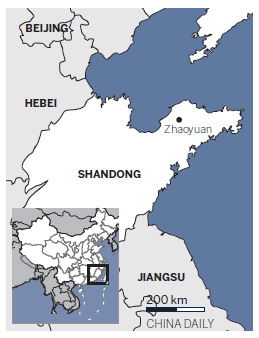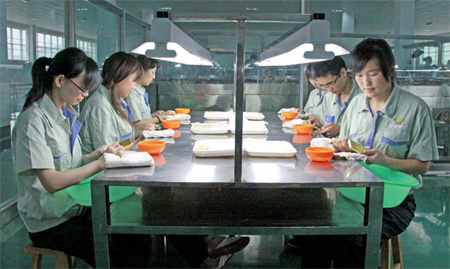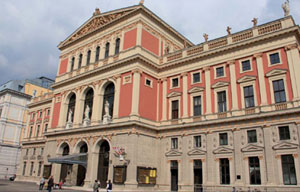Mining for answers
Updated: 2011-11-04 08:53
By Lin Jing (China Daily)
|
|||||||||
|
Workers polish gold at a workshop of the Zhaojin Gold and Silver Refinery Group in Zhaoyuan. The city produced 26 tons of gold last year. Provided to China Daily |

China's 'gold capital' struggles to cope with dwindling resources, higher output costs
Visitors to Zhaoyuan in Shandong province, East China, can often hear residents talking incessantly about the price of gold. Almost all the billboards along the roads in the city contain "jin", the Chinese character for the precious metal.
It is all part of a fitting welcome to China's "gold capital".
About one and a half hours' drive from Shandong's coastal cities of Yantai and Qingdao, Zhaoyuan boasts 66 gold mines with deposits totaling 500 tons. The city produces about 31.3 tons of gold every year, accounting for at least one-seventh of the country's total gold output every year. The rich resource has helped rank Zhaoyuan No 1 for 36 years among all county-level cities for annual gold production.
Increasing demand for the precious metal fueled by the global economic downturn and weak currencies has helped stimulate the local gold industry.
Last year, Zhaoyuan produced 26 tons of gold with total sales hitting 32.5 billion yuan ($5.1 billion, 3.8 billion euros). In the first half of this year, production hit about 13.5 tons to help record a revenue of 2.41 billion yuan, figures from the local authorities show.
The city has also established a complete gold industry chain from gold prospecting, mining, smelting and refining to gold machinery manufacturing, mine designing and engineering as well as gold and silver product processing.
But the city of gold may be losing its luster despite bullish international gold prices and strong domestic demand, with many of its mines running out of reserves after years of exploration.
Some of Zhaoyuan's mines are already exhausted after years of mining, amid efforts by local authorities to encourage large enterprises to acquire smaller ones and expand exploration, says Liang Guodong, deputy director general of the Gold Industry Management Bureau.
"Gold is a scarce resource and will be used up in 10 years' time if mining goes on at the current pace. If we keep the growth rate at 7.6 percent, the reserves in Zhaoyuan will be depleted within eight years," Liang says.
To help them face the challenges posed from depleting mines, a number of mining companies have begun recycling abandoned low-grade ore or digging more deeply to extend the life cycle of mines, Liang says.
"In the past, we usually used gold ore that contained at least 3 grams of gold per ton. But with the price going up so fast, we have lowered the figure to 1.5 grams," says Jiang Haojun, the barmaster of Jinchiling mine.
The current production cost of 1 gram of gold is about 90 yuan, Jiang says. But this year the figure might increase by about 10 percent because of higher labor and electricity costs.
Jinchiling entered the market in 1966 and now has 1,300 employees. Gold prices are at their peak but the group has no plans to expand production, he says.
"We try to keep our annual output steady. Otherwise workers' safety will be jeopardized," he says.
Still, with a deposit of 6 tons and a yearly output of 0.62 tons, Jinchiling plans to dig from the current depth of 400 meters to 600 meters, after the reserves are expected to be used up in 10 years.
That also means risks and production costs will increase.
"With every 100 meters deeper, the temperature climbs by 2 degrees. Ground pressure also increases and all these will threaten the mining process," Jiang says.
To help cope with rising difficulties, the mine needs to use more advanced equipment and better ventilation and monitoring systems.
"We have to spend 1.5 million yuan on new ventilation equipment. Together with drainage and power distribution facilities, the total cost will be about 10 million yuan, with an additional 1 million yuan as annual maintenance fees," he says.
A number of Zhaoyuan's mining companies have also extended their prospecting to other provinces for long-term development.
By the end of last year, Zhaojin Group, the country's largest gold producer and one of the top 15 producers in the world, set up more than 20 outfits in other parts of China such as the Xinjiang Uygur autonomous region as well as Hebei and Gansu provinces. The group discovered new gold reserves of 248 tons and produced 2.4 tons of gold last year.
Other enterprises are also trying to move downstream by diverting their focus to further process and develop high-value-added products.
"The profit margin for gold bars is basically fixed but can also fluctuate with gold prices. But processing more gold products such as jewelry can help add value for enterprises," says Zhang Mianhui, manager of the Zhaojin Gold and Silver Refinery Group.
Formed in 2001, the group specializes in the production of gold bars, coins and ornaments. It recorded annual sales of 9.3 billion yuan last year. Sales hit 5.7 billion yuan for the first half of this year and are estimated to reach 12 billion yuan for the whole of 2011.
Despite the impressive figures, Zhang says the gold bar market relies completely on quick turnovers and revenue remains low.
"The processing fee for gold bars is 8 yuan per gram, which makes the gross margin less than 3 percent. The banks are also bringing down the fee by 30 percent because there are too many manufacturing companies waiting for orders," he says.
His company's major clients include big lenders such as Industrial and Commercial Bank of China. But it has also started focusing on tailored products for companies and individual clients last year.
The company imported a color printer machine from Germany to offer colored designs for gold coins and bars as part of efforts to diversify its products.
"More tailored products for clients help sharpen our core competitiveness," Zhang says. This part of the business accounts for just 10 percent of the total sales but plans are afoot to increase it to 40 percent, he says.
The local authorities are also planning to expand Zhaoyuan's economy behind its pillar industry for sustainable development.
The gold sector contributed 66 percent of the local gross domestic product (GDP) last year but the government is working to raise the percentage of GDP contributed by other industries to 50 percent by 2015.
"Our plan is to use the money earned from the gold industry to support other sectors such as tourism, agriculture and manufacturing," Liang says.
In the past five years, Zhaoyuan authorities invested 5.87 billion yuan in 53 industrial transformation projects. Up till August this year, another 35 projects have been launched with an investment of more than 3 billion yuan, figures from the local authorities show.
"I believe that by the time all the gold deposits are depleted, Zhaoyuan will have successfully carried out this industrial transformation," Liang Guodong says.
(China Daily 11/04/2011 page8)












